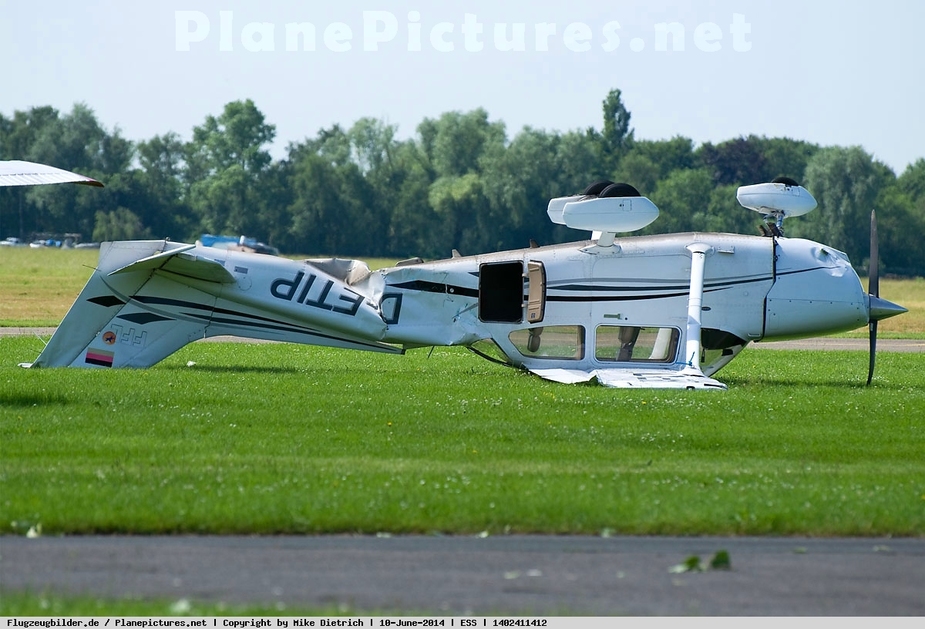I never really thought about this too much, as anywhere I have been so far has been large enough to offer overnight hangarage. However, this isn’t available everywhere. So what do people do? Tie-down… sure – but where? On the grass? Or do many airports have tie-down rings set into the apron? I have not seen very many of the latter, but perhaps I simply didn’t notice because I wasn’t really looking and if I’d asked for overnight parking, I would have been directed to a different location.
Thoughts and advice greatly appreciated.
back in 2001 I´ve been to Siljan fly in. There was number of aircraft overnight and I was really surprised nobody did tie-down. Just an English guy with Europa and me. But apparently nothing had happened. What I was told – always tie-down the aircraft overnight no matter there is high pressure area over the whole Europe. So I am doing that. Usually there are rings on hard or grass somewhere at the airport, so you need just a rope. But when planning to stay overnight make sure you have whole set – there are exceptions.
The need depends on the plane.
A TB20 with full tanks would need ~50kt wind to move it. But a C150 would need maybe 20kt to blow it away. A 450/650/750kg plane will be similarly vulnerable, with high wing ones being more vulnerable than low wing ones. Compare these two:
Some airports have mandatory tiedowns. I am at Athens LGAV now and they required it.
Flying a very light (450 kg MTOW) high wing, I have a set of three earthscrews (or does one call them groundscrews?) and ribbons. Never used them, as yet. But they do be on the checklist for multi-day trips.
It all really depends on the aircraft, and the expected winds, and also what is available…
I tend to fly at the heavier end of the single scale or now a twin, with stall speeds > 50kt, so the name of the game is keeping the aircraft from going walkabout, rather than from taking off, in anything but the “all bets are off” storms.
For example, in Tromso recently I was offered two of the universal concrete-filled tires to tie down a 2-tonne twin – I asked for two pairs of extra chocks instead, anything that I can easily lift won’t make much of a difference, I don’t trust park brakes and in any case strong winds can bounce the aircraft around a bit. I also always put in the control locks regardless of wind direction.
Cobalt,
Tromso – what a great place to visit. What is it like getting up there? I’d like to do it some day, just looks like a bit a long haul…
DMEarc
Thanks all. I own a heavy, low-wing type, so probably one of the less vulnerable, but I still wouldn’t want it getting loose and damaging something else. A very good illustration in that video Peter. I think I will acquire a set of stakes for grass parking.
The club where I took my first flying lessons lost a parked C150 during an overnight storm – in the morning it was found on its roof, very badly damaged and was written off.
This very nice airplane had been tied-down during the day. I know it because I did it.
Then came the storm that no-one had expected (there was even an airship outside which was completely wrecked, too).
Buy good ropes.

Buy good ropes.
A friend flying his J3 from California to the eastern U.S. coast and back tied his plane down with makeshift tie downs, then when returning in the morning found the plane was gone. Thinking initially that it had been stolen, he eventually started looking around and found it had pulled the tie downs loose, then crow hopped off the airport property and into an adjacent field! By some miracle the only damage was a slightly bent horizontal tail which he proceeded to straighten and recover on site (he’s an A&P) Having done that he flew it home and redid the repair a little more neatly. Now he says to be very careful with winds and with home made or make shift tie downs, particularly with a lightly loaded plane… And since then, thinking he’s used up all available luck for this situation, I’ve been very careful – in any kind of weather I’ll do a lot to put the plane in a hangar.
IMHO, those screw-in thingies which you screw into soil are not going to be any good. Neither are the blocks of concrete or car tyres filled with concrete – a good number of UK pilots have got airborne with them still attached.